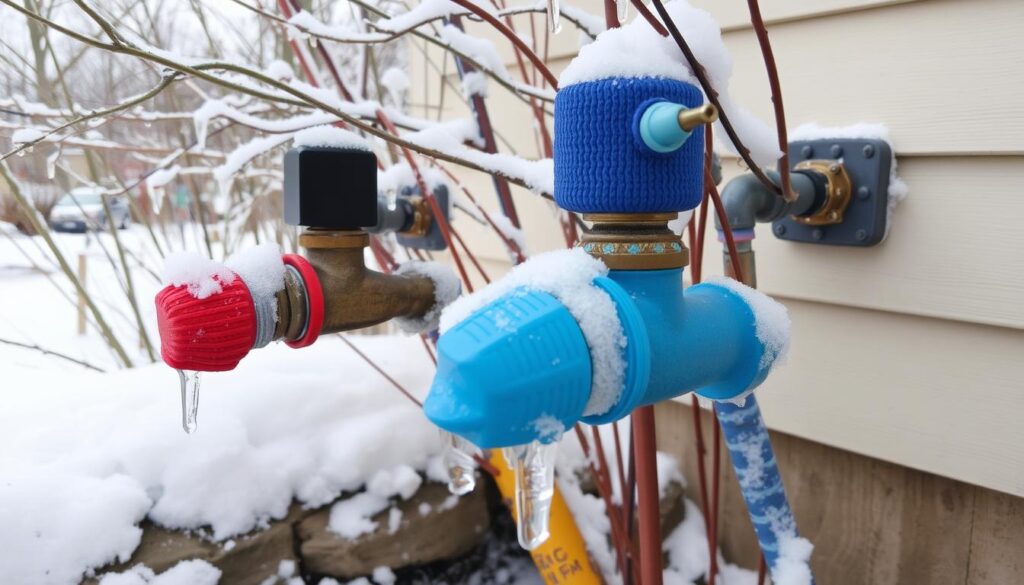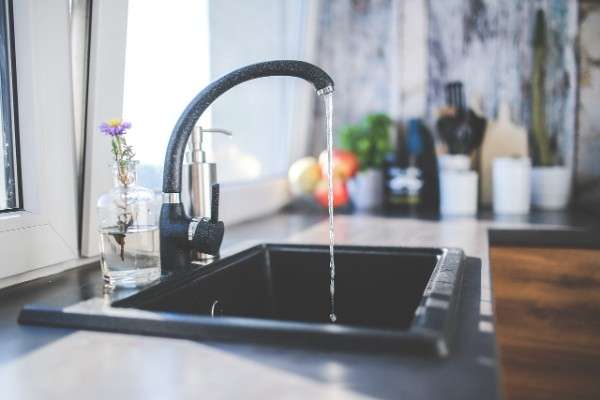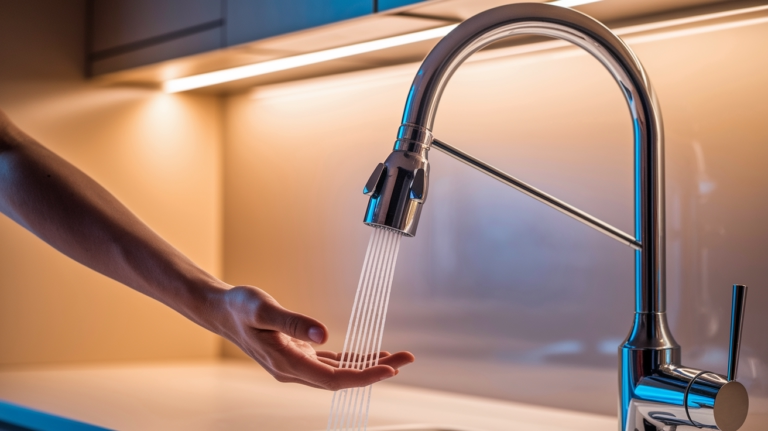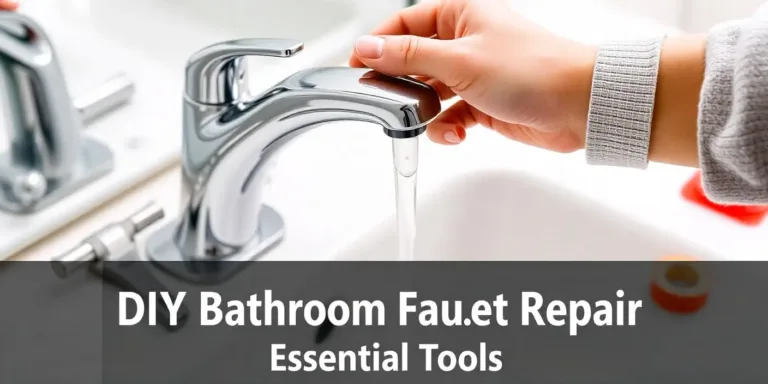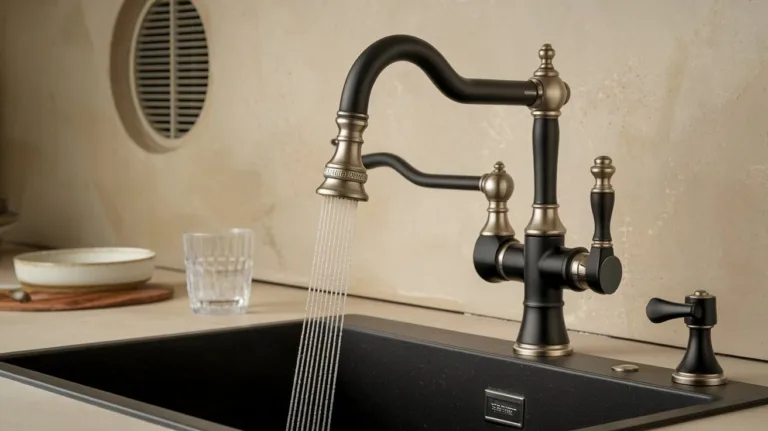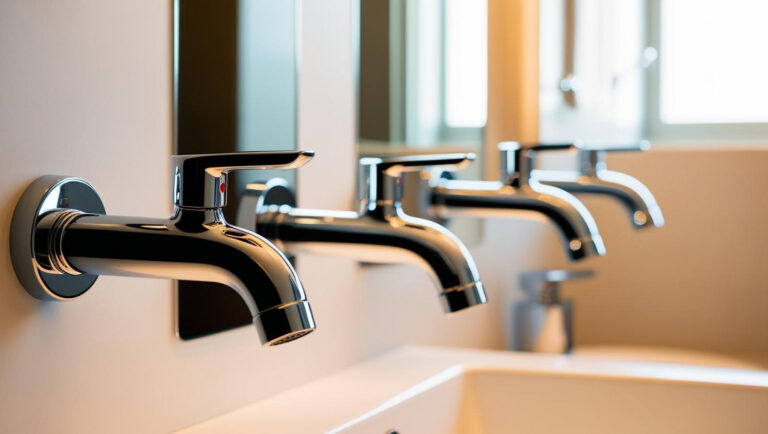How to Prepare Faucets for Winter? – DIY Winter Guide
Did you know a burst pipe can cost up to $5,000 to fix? As winter approaches, protecting your home’s plumbing is key. This guide will help you prepare your faucets for the cold weather.
Needs of Preparing Faucets for Winter
- Learn how winter weather affects your plumbing and why faucet protection is vital.
- Find out which faucets are most at risk and how to insulate and winterize them.
- Discover the tools and materials you need to get your faucets winter-ready.
- Get tips on preventing emergencies and maintaining your faucets all winter.
- Feel confident in your ability to winterize faucets yourself and avoid expensive water damage.
Understanding Winter’s Impact on Your Home’s Plumbing System
When winter comes, your home’s plumbing system faces big challenges. Knowing how to protect your home from freeze damage is key. This helps avoid expensive water damage.
Common Freeze Damage Scenarios
Freezing pipes are a big problem in winter. Water inside pipes expands when it freezes, causing pipes to burst. This can lead to costly repairs and even mold.
Why Faucet Protection Matters
Faucets are especially at risk of freeze damage, as freezing water can burst pipes. Protecting your faucets is vital to avoid freeze, burst pipes, and water damage.
Identifying Vulnerable Faucet Points
It’s crucial to find out which faucets are most at risk. Outdoor faucets and those in cold spots are most vulnerable. This includes areas like attics, crawl spaces, or basements.
By understanding winter’s effects on your plumbing and protecting your faucets, you can keep your home safe. This prevents freeze damage, burst pipes, and water damage.
“Prevent costly winter damage by winterizing your outdoor faucets with these simple steps: shut off the water supply, drain remaining water, and use faucet covers for insulation.” OCWA
Essential Tools and Materials for Winterizing Faucets
As winter gets closer, it’s key to have the right tools and materials ready. This ensures your faucets are winterized and your plumbing system is safe. Here’s a list of what you’ll need to do the job right.
Insulation materials are a must for winterizing faucets. You’ll need foam pipe insulation, insulating tape, or faucet covers. These items keep pipes and faucets from freezing, keeping your outdoor water sources working all winter.
Pipe wrap is also crucial. It’s a flexible, self-adhesive material that wraps around exposed pipes. It adds an extra layer of insulation and protection against the cold. It’s great for covering vulnerable areas like outdoor faucet connections.
- Heat tape is another key tool for winterizing faucets. It’s a special electrical tape that wraps around pipes and faucets. It provides gentle heat to prevent freezing. Heat tape is perfect for hard-to-insulate areas, like exterior hose bibs.
- Faucet covers are a simple yet effective way to protect your outdoor faucets. These insulated, weatherproof covers fit snugly over the faucet. They block wind, snow, and ice.
With these essential tools and materials, you’ll be ready to winterize your faucets. You’ll keep your home’s plumbing system safe from winter’s harsh conditions.
How to Prepare Faucets for Winter?
Winter is coming, and it’s time to protect your home’s plumbing. This includes both indoor faucets and outdoor spigots. Preparing them for cold weather can prevent expensive and inconvenient damage.
Indoor Faucet Protection Steps
To keep your indoor faucets safe from winter, follow these easy steps:
- Use foam insulation sleeves or wraps on exposed pipes and faucets. This keeps them warm and prevents freezing.
- Turn off the indoor water supply to the faucet and open the tap. This removes any water that could freeze.
- For hard spots, use indoor faucet insulation kits for extra protection.
Outdoor Faucet Winterization Process
Protecting your outdoor spigots from freezing is just as important. Here’s how to do it:
- Find the shut-off valve for your outdoor spigot covers and turn it off. If you have a hose, disconnect it.
- Open the outdoor faucet to drain any water left inside. Then, keep it open.
- For frost-free sillcocks, turn a shut-off valve inside your home to stop water flow.
- Think about using outdoor covers or insulation kits for extra protection.
By preparing your indoor and outdoor faucets, you can avoid expensive damage. This ensures your plumbing system is ready for winter.

Emergency Prevention and Maintenance Tips
As winter arrives, it’s key to keep your home’s plumbing in check. Preventing frozen pipes and other winter plumbing issues is a must. Here, I’ll share tips to help you avoid costly thawing and maintenance problems.
Preparing for the Worst
Being ready for winter pipe maintenance is smart. Here are steps to prevent plumbing emergencies:
- Insulate exposed pipes, both indoor and outdoor, to protect them from freezing temperatures.
- Locate your main water shut-off valve and ensure it’s in working order, so you can quickly turn off the water in an emergency.
- Keep a plumber’s snake or other tools on hand to help thaw frozen pipes if they do occur.
- Know the signs of a frozen pipe, such as reduced water flow or strange noises, and address the issue promptly.
Maintaining Faucets and Pipes
Regular maintenance keeps your plumbing system running smoothly. Here are proactive steps:
- Inspect and insulate outdoor faucets and hose bibs to prevent freezing.
- Drain water from pipes and irrigation systems before the first freeze.
- Clean gutters and downspouts to ensure proper drainage and prevent ice dams.
- Monitor your water bill for any unexpected spikes, which could indicate a hidden leak.
By following these tips, you can avoid plumbing problems and enjoy a worry-free winter.

“An ounce of prevention is worth a pound of cure when it comes to winter plumbing issues.”
Conclusion
Preparing your faucets for winter is key to a winter-ready plumbing system. Knowing how cold weather affects your plumbing helps. Using the right winterization techniques protects your home from expensive damage.
Faucet winterization has many benefits. It prevents pipes from bursting and prevents costly leaks. It also keeps outdoor faucets and irrigation systems working in the cold. Protecting your faucets is a small effort that can save you a lot of trouble later.
This guide covers indoor and outdoor faucets. It provides the knowledge and tools to do the job well. By following these steps, you’ll have a plumbing system ready for winter’s challenges.
FAQ
What are the most common freeze damage scenarios I should be aware of?
Winter brings common freeze damage like burst pipes and cracked faucets. These can lead to expensive water damage and plumbing repairs if not fixed early.
Why is it important to protect my faucets from the cold weather?
Keeping faucets from freezing is key to avoid bursting and water damage. Proper winterizing of indoor and outdoor faucets protects your plumbing. This saves you from winter plumbing emergencies and their costs.
How can I identify vulnerable faucet points in my home?
Check faucets in uninsulated or poorly insulated spots like exterior walls or attics. These are more at risk of freezing and need extra care during winter.
What are the essential tools and materials I need to winterize my faucets?
You’ll need insulation materials like pipe wrap or heat tape, faucet covers, and a water shut-off key or wrench. Having these ensures your plumbing stays safe from the cold.
How do I properly prepare indoor and outdoor faucets for the winter?
For indoor faucets, insulate exposed pipes, wrap the faucet, and turn off the water supply. Drain the line too. For outdoor faucets, shut off the water, drain the line, and use a cover or insulation sleeve to protect against cold.
What should I do if I encounter a frozen pipe or faucet during the winter?
If you find a frozen pipe or faucet, act fast to prevent damage. Try to thaw it with a space heater, heat lamp, or heat tape. If it doesn’t work, call a professional plumber to fix it and avoid more damage.

